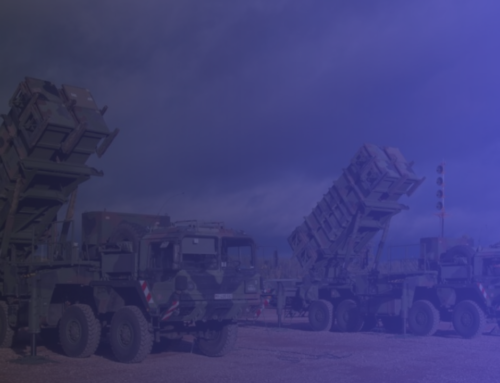Federica Fazio (PhD Candidate, DCU)
Were Italy and France to sign and ratify the 1952 European Defence Community Treaty (EDCT) today, the European Defence Community (EDC) would not lead to a decoupling from the United States (US) and the North Atlantic Treaty Organization (NATO). Instead, it would foster further complementarity between the two organisations and contribute to advancing European defence integration. The EDC would enable Europeans to take on greater responsibility for their own defence and reinforce NATO’s collective defence clause, in line with the pursuit of cooperative autonomy with the Alliance.
As stated in Article 5 EDCT, this supranational community “shall cooperate closely with the North Atlantic Treaty Organization”. According to Art.18 EDCT, the NATO Supreme Allied Commander (SACEUR), would be empowered to verify that the European Defence Forces (EDF) are adequately organised, equipped, trained and ready for use. If confirmed, and except in cases of internal defence (Art.18.3), these forces would be at SACEUR’s disposal, allowing him to submit deployment requirements to the EDC (Art.18.1). In wartime, SACEUR would have full command over the EDF (Art.18.2). General Christopher Cavoli, the current SACEUR and Commander of the US European Command, noted at the NATO Public Forum in July that the Deterrence and Defence of the Euro-Atlantic Area (DDA) Concept and the new family of plans for large-scale deterrence and defence operations have changed the way peacetime authorities are granted to SACEUR. For example, he now has the authority, in the run-up to a conflict, to deploy forces to deter it and ensure readiness if Article 5 of the North Atlantic Treaty (NAT) is invoked. These plans also set specific force structure requirements. To meet these needs, the Deputy Supreme Allied Commander Europe (DSACEUR) has asked allies to specify which military assets they could commit to NATO in case of all-out-war without reserving them for national use. While several allies have pledged their full force structures, gaps at enablement and logistics remain. The EDF could play a vital role in resourcing the plans and filling these gaps.
Moreover, like the NAT, the EDCT also contains a mutual defence clause. Article 2.3 EDCT states: “Any armed aggression directed against any one of the member States in Europe or against the European Defense Forces shall be considered as an attack directed against all of the member States. The Member States and the European Defense Forces shall furnish to the State or Forces thus attacked all military and other aid and assistance in their power.”
The article seems to contain elements of Art. 5 NAT, but the obligations it envisages are somewhat more stringent. Similarly to Art. 5 NAT, the clause states that “an armed aggression directed against any one of the member States…shall be considered as an attack against all”. The norm speaks, however, of “armed aggression” and not “armed attack”. Therefore, the scope of actions that might trigger the EDCT’s mutual defence clause could, at least in theory, be broader than those that would activate NATO’s mutual defence clause. Additionally, while Art. 5 NAT “envisages a binding obligation of result, to be achieved through different means, including but not limited to military action”, Art. 2.3 EDCT expressly encompasses both military and non-military means of assistance, committing its members to an obligation of means rather than one of result.
Furthermore, the phrasing “in Europe or against the European Defense Forces” seems to imply that the parties to the EDCT would be bound to collective defence even for attacks targeting their armed forces stationed outside the European territories of the member states. Specifically, Art. 120.2 EDCT stipulates that the EDF could be deployed to territories included in the area defined by Art. 6 NAT (120.2 a), as well as schools, training centres and other EDC establishments within that area and in Africa north of the Tropic of Cancer (120.2b). This decision would be made by the Council of the EDC, following consultation with the North Atlantic Council (NAC) and with the agreement of SACEUR. Moreover, Arts. 1 and 2 of the Protocol Concerning Guaranties of Assistance from the Member States of the Community to the State Parties to the North Atlantic Treaty envisage reciprocal mutual security guarantees between these two defensive alliances. Thus, it can be reasonably inferred that the geographical scope of the EDC’s mutual defence clause would not be restricted to Europe but could extend to the NATO area as well, resulting in a reinforcement of NATO and its security guarantee.
A reactivation of the EDCT could also benefit relations with the United Kingdom (UK). Art. 1 of a separate treaty concluded between the EDC and the UK, which at time did not wish to be a part of the EDC, states that “If, at any time while the United Kingdom is a party to the North Atlantic Treaty, any other Party to the present Treaty which shall at that moment be a member of the European Defense Community, or the European Defense Forces, should be the object of an armed attack in Europe, the United Kingdom shall, in accordance with Article 51 of the United Nations Charter, afford the party or the defence forces so attacked, all the military and other aid and assistance in its power”. The importance of this article should not be underestimated in the post-Brexit era.
As recently pointed out by Sloan, in 1954 “The EDC failure virtually guaranteed that the United States would remain the dominant force leading Western defence against the Soviet Union” and that European defence would remain largely intergovernmental. A revival of the Treaty today would allow Europe to finally move the process of European defence integration forward, promoting fairer burden-sharing and complementarity with NATO.





